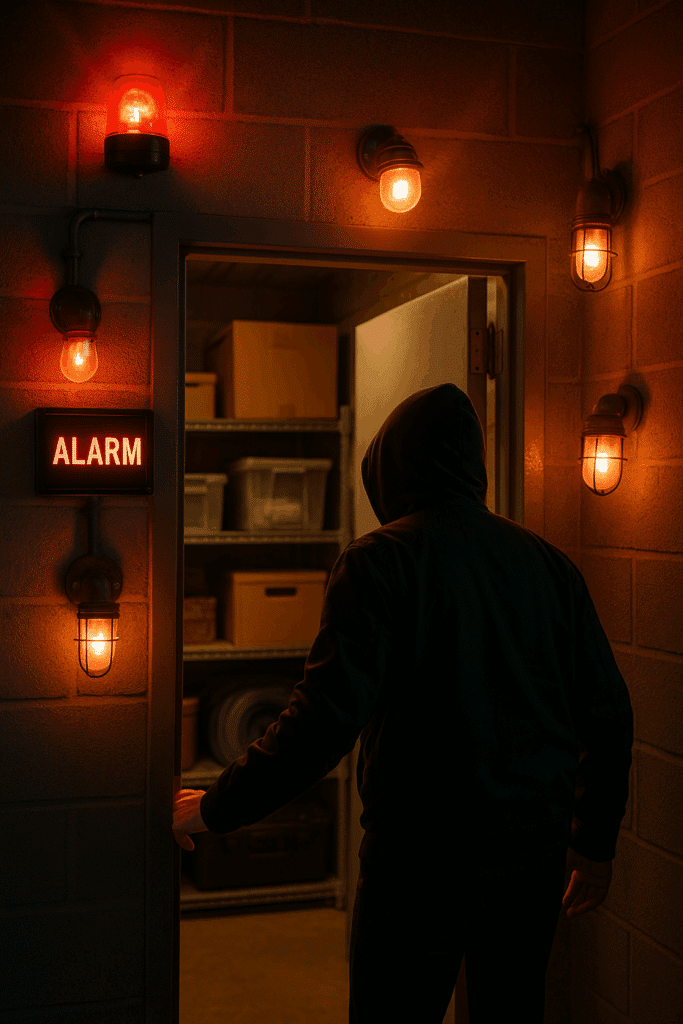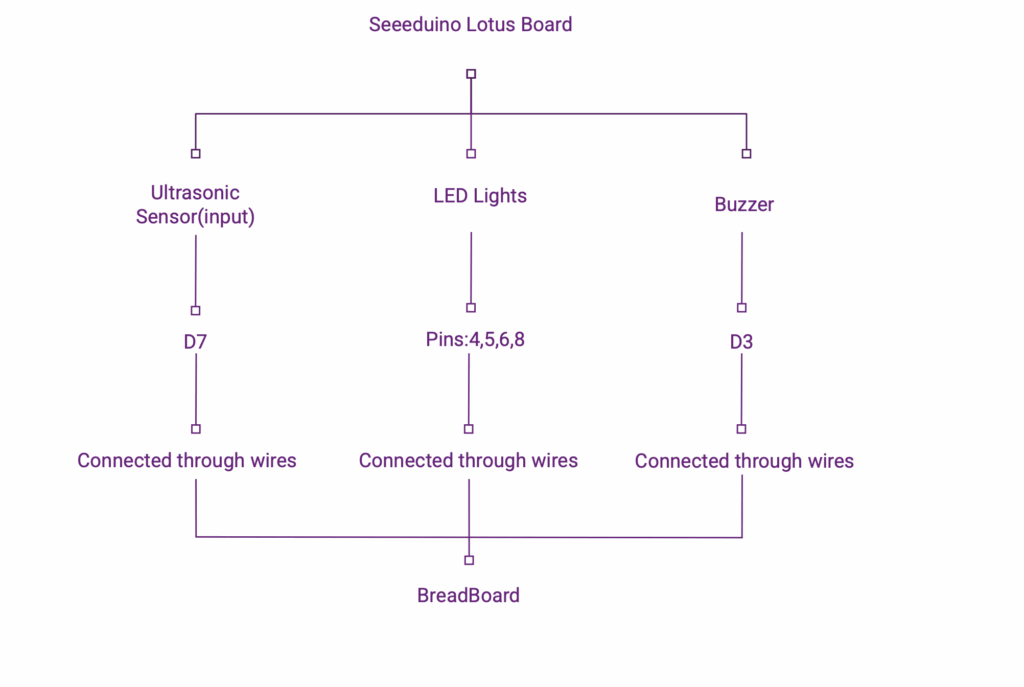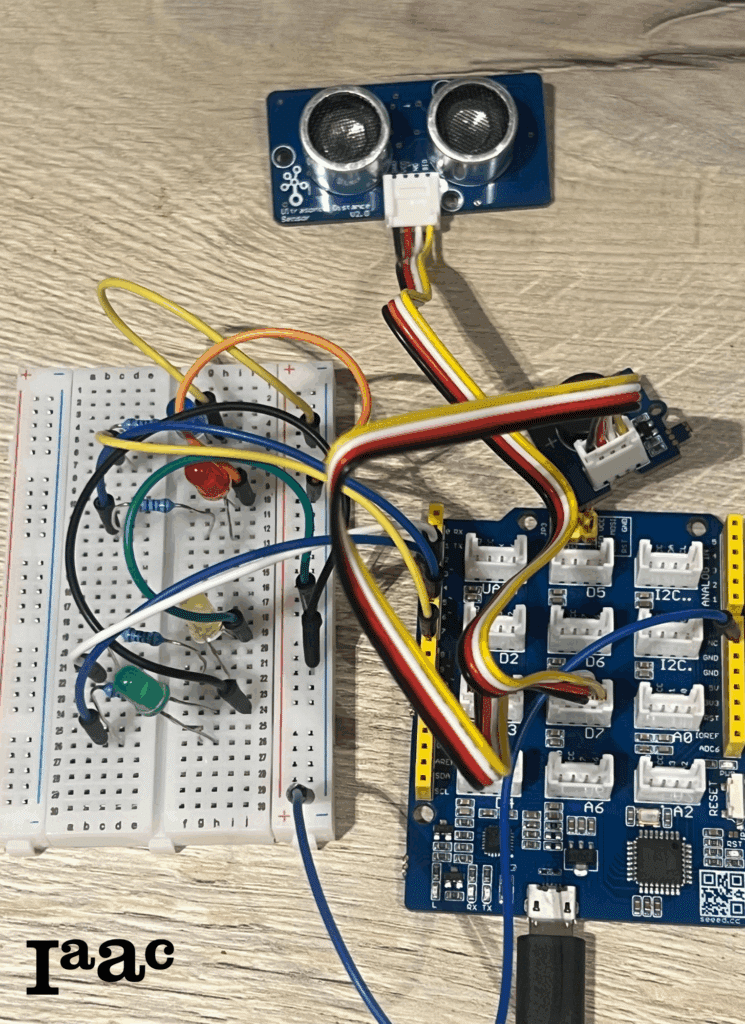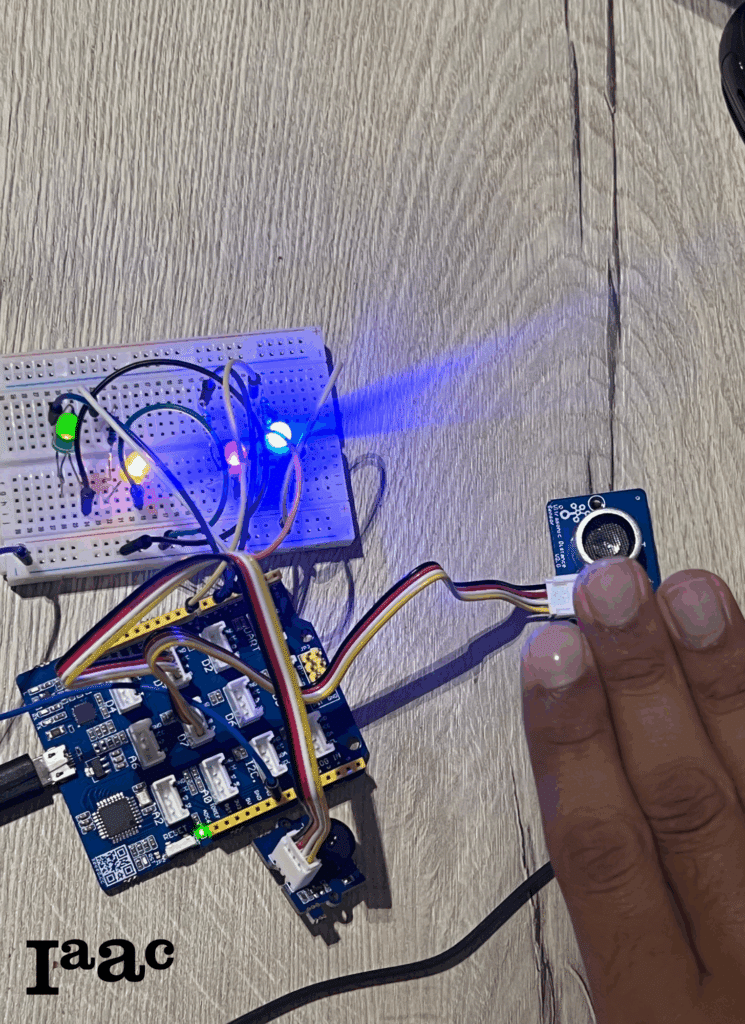This project explores how technology can transform everyday architectural spaces into interactive environments. The concept focuses on an alarm system that reacts to human presence through light and sound, creating a sensory dialogue between the user and the space.
This experiment merges architecture, design, and electronics to question how spatial security can also become an expressive, perceptive experience. It aims to move beyond the idea of technology as purely functional, instead turning it into a communicative element within architecture.

CONCEPT
The concept is to design an interactive system that senses presence and reacts through light and sound, how it can transforms a simple space, like a storage room, into a responsive environment that recognizes when someone enters and communicates that through immediate visual and auditory signals. It triggers a sequence of lights and sounds that reflect the distance and movement of the person. This creates an atmosphere of alertness and connection, where the environment itself becomes active rather than passive.
SCHEMATICS
The Arduino connects pins 8, 6, 5, and 4 to LEDs that go to ground, creating the light signals that respond to detected movement. Pin 3 is connected to the buzzer, which produces sound when the system is activated. Pin 7 is linked to the ultrasonic sensor, which functions as the input device by detecting distance and presence. The sensor continuously sends data to the Arduino, which then translates this information into visual and auditory responses. When an object or person enters the sensor’s range, the LEDs begin to light up one by one according to the distance, and the buzzer emits sound to indicate proximity.

PROTOTYPE


NEXT STEPS
For future improvements, the project can evolve in several ways:
- Add an LCD to display short messages: So the system can show messages like “Object detected” or “Safe area,” making it more informative and user-friendly.
- Add a silence system for owners: Include a button to stop the buzzer and light when the owner wants to turn off.
- Improve distance detection: Make the sensor read distances more accurately and respond faster to movement, increasing reliability and precision.
VIDEO
This video demonstrates the process and materials used as well as the prototype functions in action.

